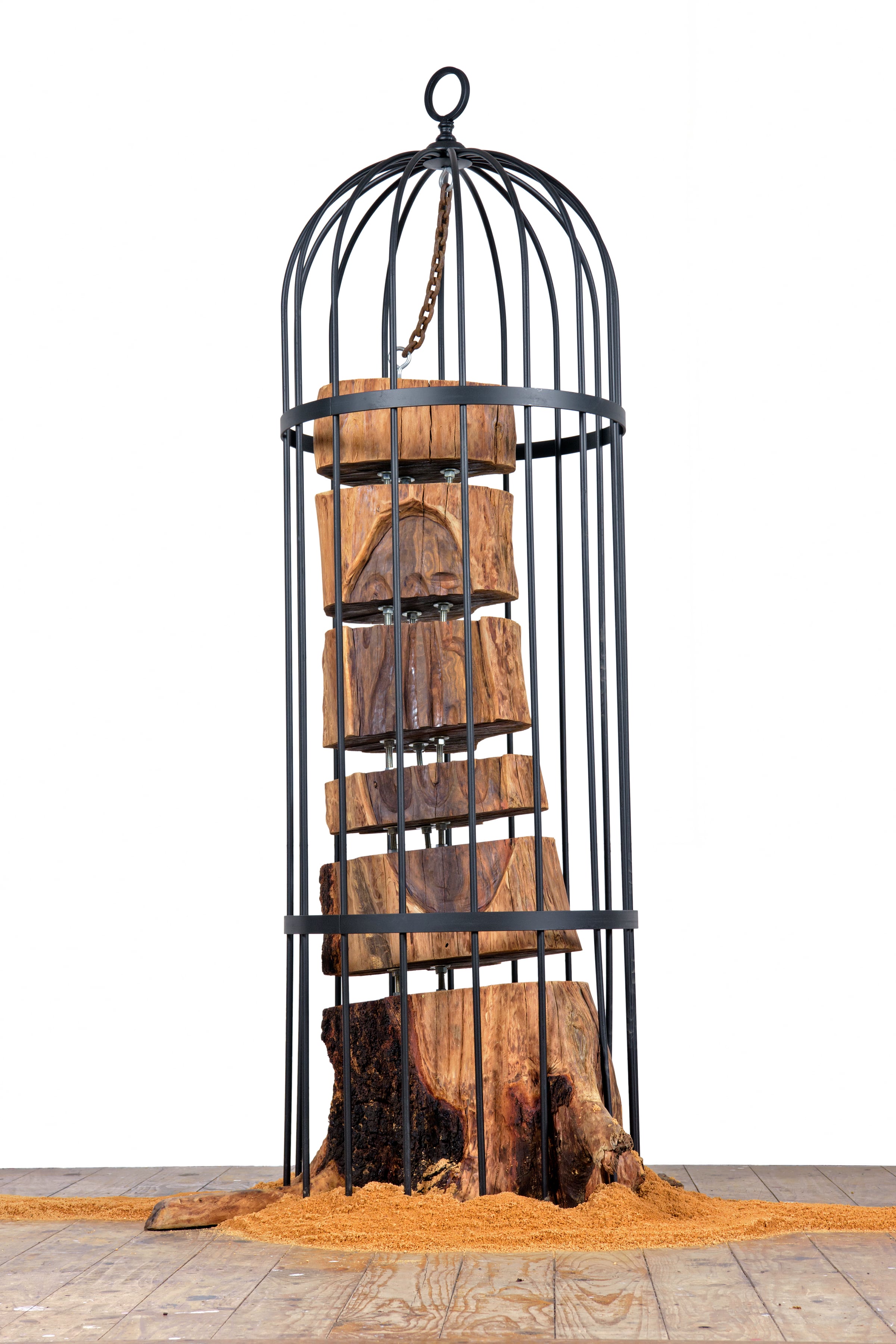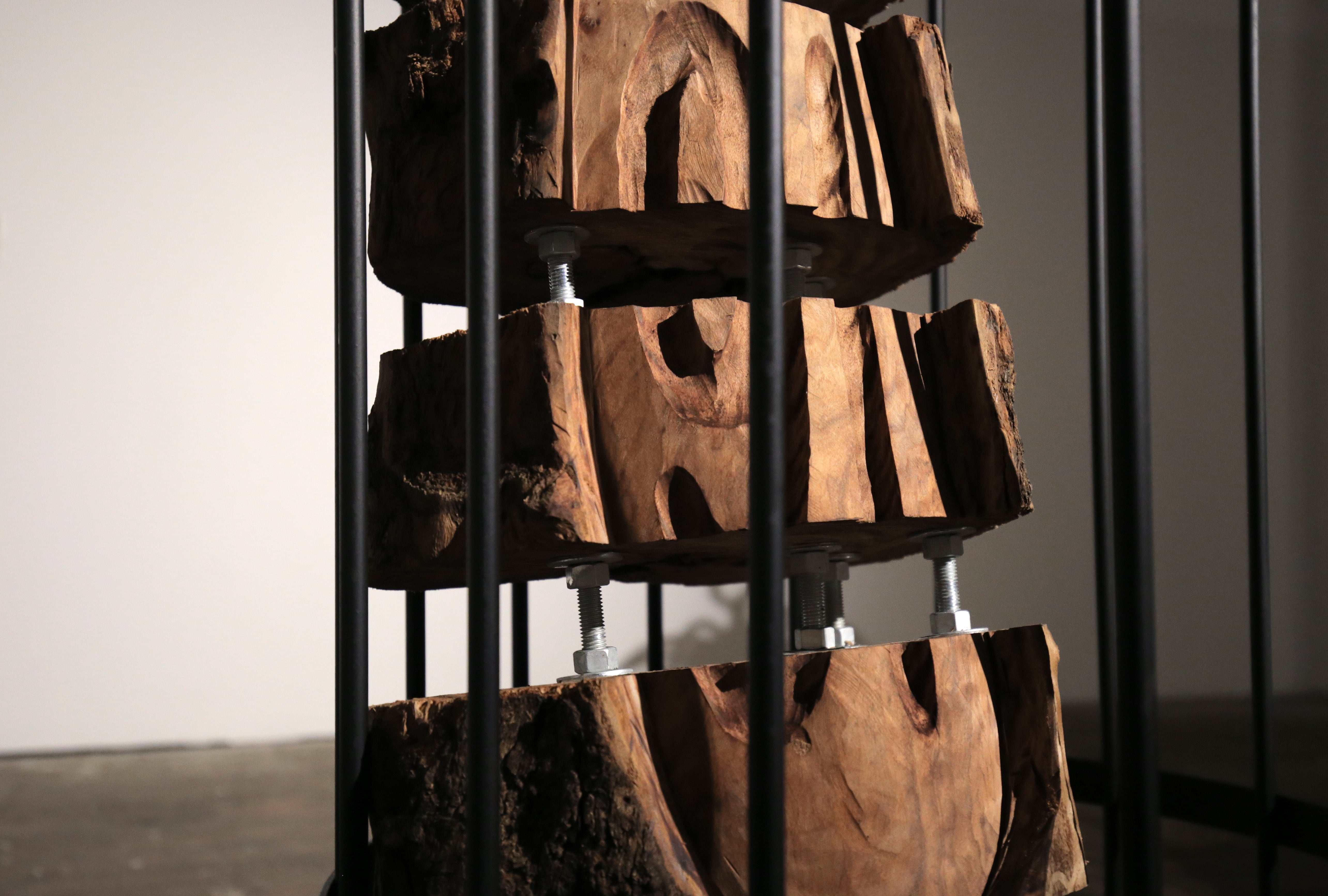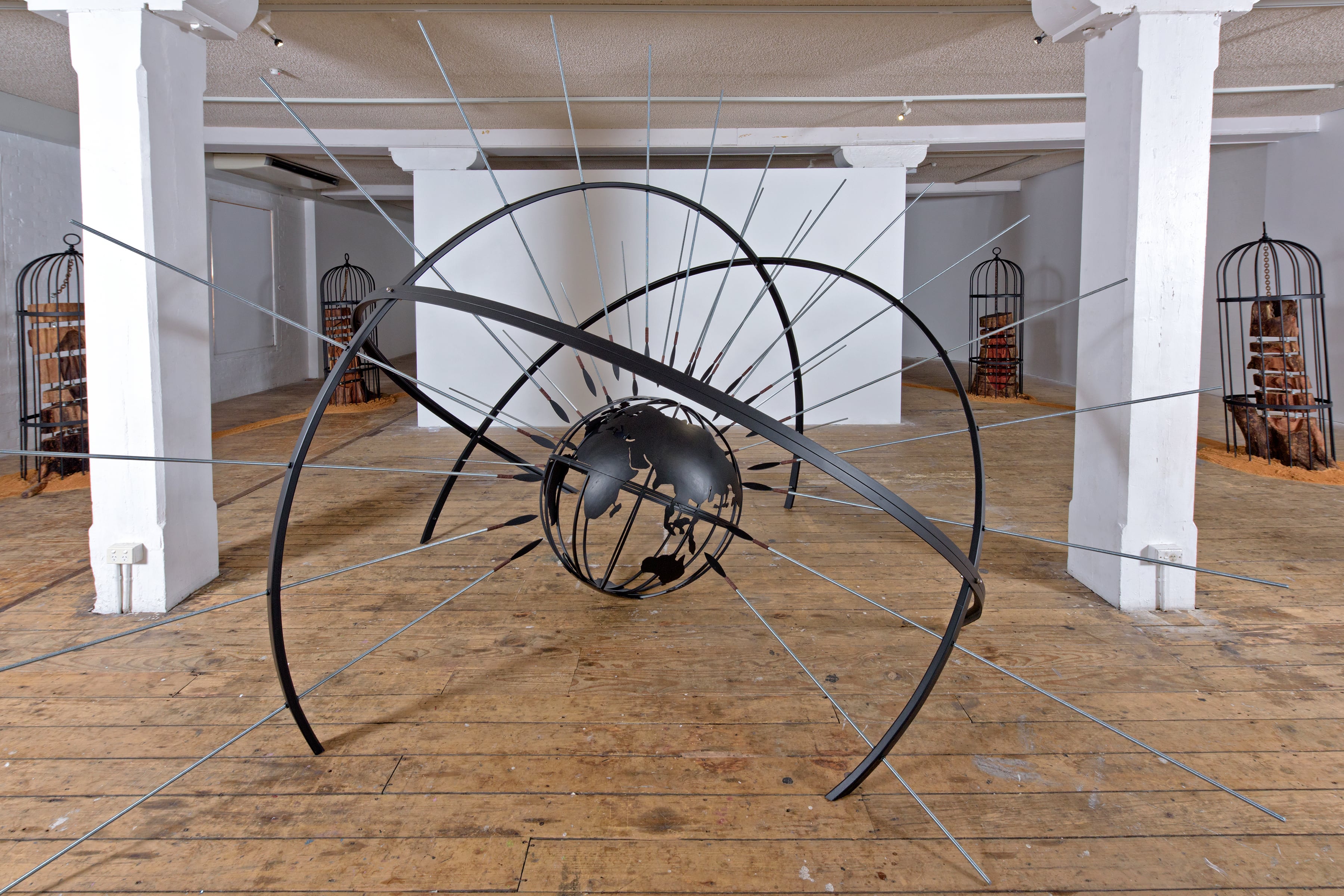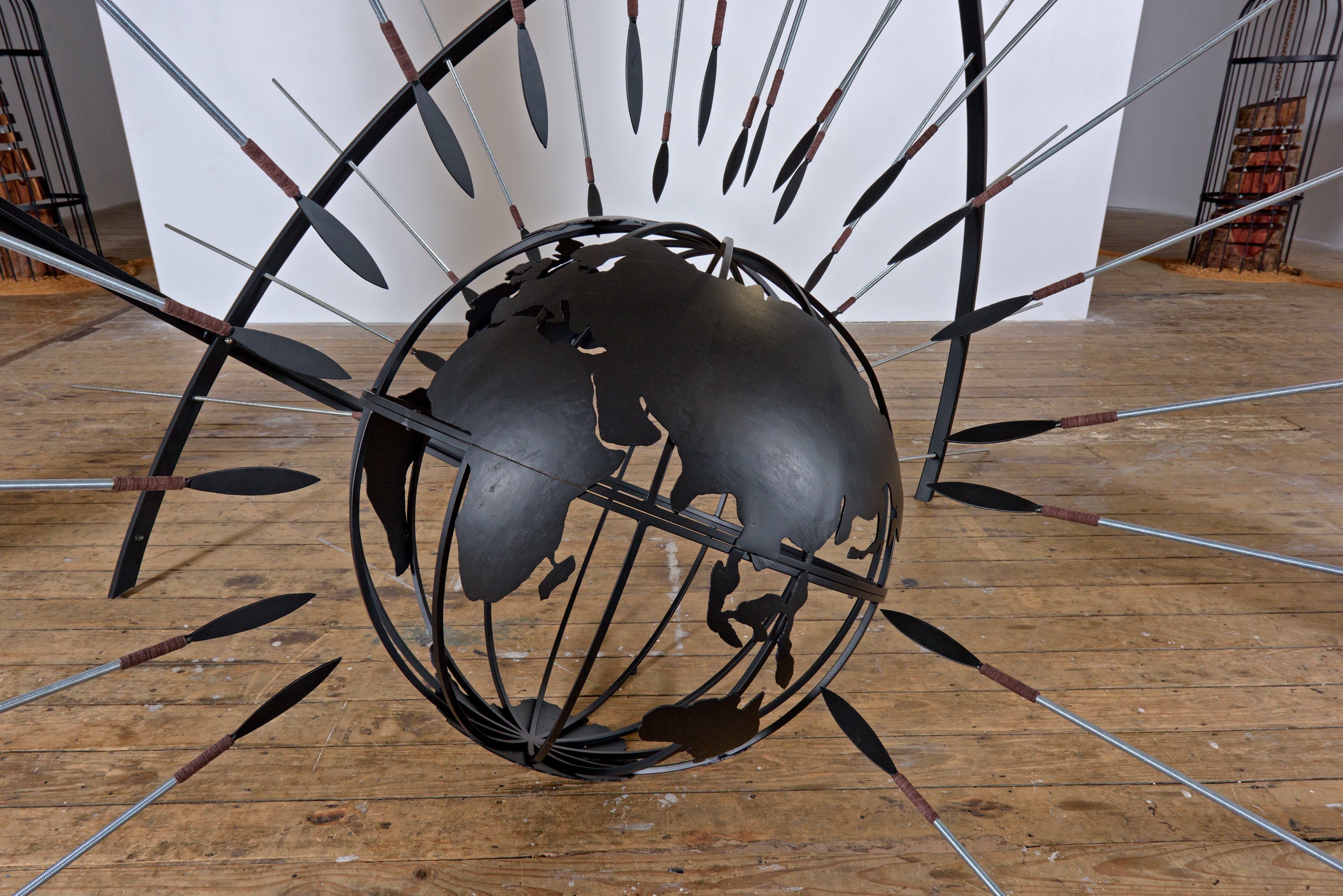




Artist: Warraba Weatherall
In August I was invited to preview the exhibition InstitutionaLies by Warraba Weatherall at Metro Arts Brisbane. Warraba and acting curator Llewellyn Millhouse walked Brisbane-based Quandamooka curator Freja Carmichael and I through the exhibition. We were both left speechless.
I am familiar with Warraba’s work, having followed his mural and street art practice for some time so I was not surprised that the show was well resolved and politically astute, as Warraba has consistently produced this kind of work. But I was surprised and stunned because it has been a very long time since I have seen such a thought-provoking, multilayered work of art that left me feeling in awe.
InsititutionaLies is an exhibition of steel, wood and sand all carefully welded and carved into structures that speak to the institutional lies of this country, of incarceration and surveillance. The exhibition marks the thirty-year anniversary of the 1987 Royal Commission into Aboriginal Deaths in Custody, and explores the ongoing injustices faced by First Peoples, and the deaths that continue to this day.
Upon entry we were greeted with an empty upright cage, linked on the floor with lines of sand to ten cages that had carved tree trunks in them, eleven in total surrounding the centrepiece installation of a large steel work. This circle of caged carved trees forms a version of the Panopticon. A method of surveillance and of instilling fear and control used in prison systems, the Panopticon is a tool of observation designed so that you do not know when you are being watched. The eleven cages also reference that at the time of the Royal Commission into Aboriginal Deaths in Custody incarcerated First Peoples were dying at an average rate of one person every eleven days.1 Ten of the cages hold the trunks of trees cut into sections with a metal spine running through them. The final cage is empty, signifying the continuation of this violence in custody, and the space that will be taken by the next person if nothing is done.
The trunks reference a cultural practice of carving into trees by First Peoples of New South Wales, and in particular Warraba’s people, the Kamilaroi. These craved trees are often known (by Europeans) as dendroglyphs and were sometimes markers of significant sites, including ceremonial grounds called Bora, as well as being grave markers. They hold incredible cultural importance, carrying the mark of clan and country. The carved trees still exist in some places today, but many have been destroyed by farmers or cut down and collected by museums, particularly around the 1950’s. The Museum I work for has a significant collection of them. Warraba has carved a number into each of his trees that correspond with some of the 339 recommendations of the 1987 Royal Commission into Aboriginal Deaths in Custody. The numbers are a link through which Warraba invites the viewer to go and research and read themselves.2
As I looked at the detail of the caged trees I thought about the objects I work with, and the dendroglyphs in the Museums Victoria collection. They were cut down from where they should be, removed from home and from community, their crucial role in their lands severed. Taken to the institution and locked up forever, they can only be visited by their people when booked, signed in and monitored. I could see the link between the cultural material that has for too long been locked away, and our own people that continue to be thrown in jail.
In the centre of Warraba’s constructed Panopticon was a large steel installation, with a globe on the floor facing west. Over the top of it was a structure based on craniometer, a vile racist pseudo-scientific tool once used by anthropologists on Aboriginal people to analyse the brain. This supersized version sits over the globe and steel spears piercing through the apparatus point towards the world. The focus and the gaze is thereby inverted back onto the western world and its ongoing colonial regime; it is under scrutiny by the artist, it is the one being analysed.
InstitutionaLies is an important exhibition, and Warraba is a gifted early-career artist whose contribution to the discourse of contemporary art is and will continue to be significant. InstitutionaLies is not merely a statement of activism, it is putting deaths in custody and the injustice of this system on the national radar again. The fact it has been the artist’s entire lifetime since the royal commission was instigated and not much has changed – the surveillance and the daily incarceration and systematic criminalisation of First Peoples continues – is almost hard to comprehend.
InstituionaLies is an extraordinary body of work. Clear in its intent and technically resolved, it highlights the ongoing disparity of equal treatment for the First Peoples of this country. It points the finger (or spear) back at the Western gaze, demanding people listen and see the realities our communities are still facing thirty years after the Royal Commission into Aboriginal Deaths in Custody. Thirty years.
Kimberley Moulton is a Yorta Yorta writer and curator based in Narrm (Melbourne) and Senior Curator of South Eastern Aboriginal Collections at Museums Victoria.
